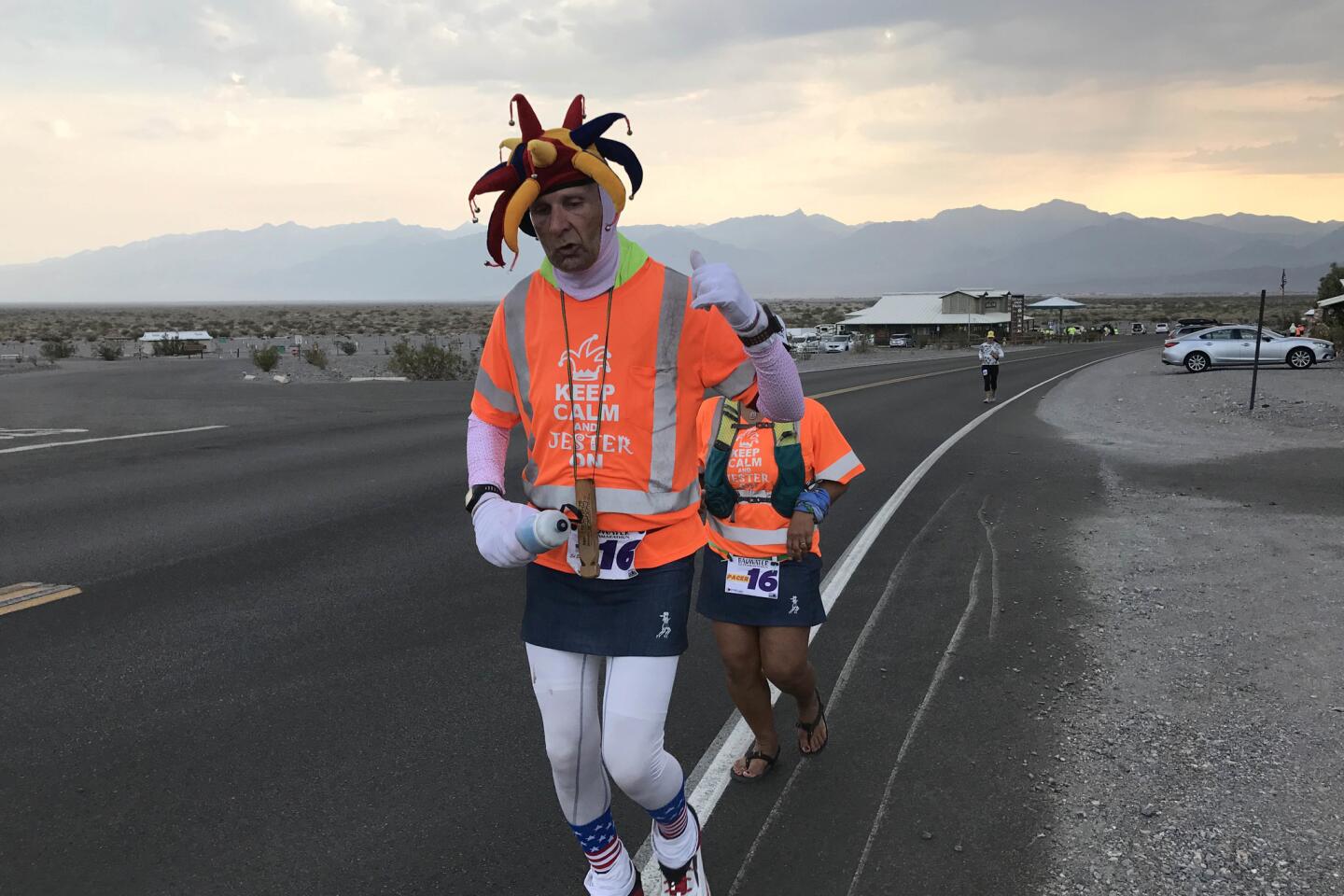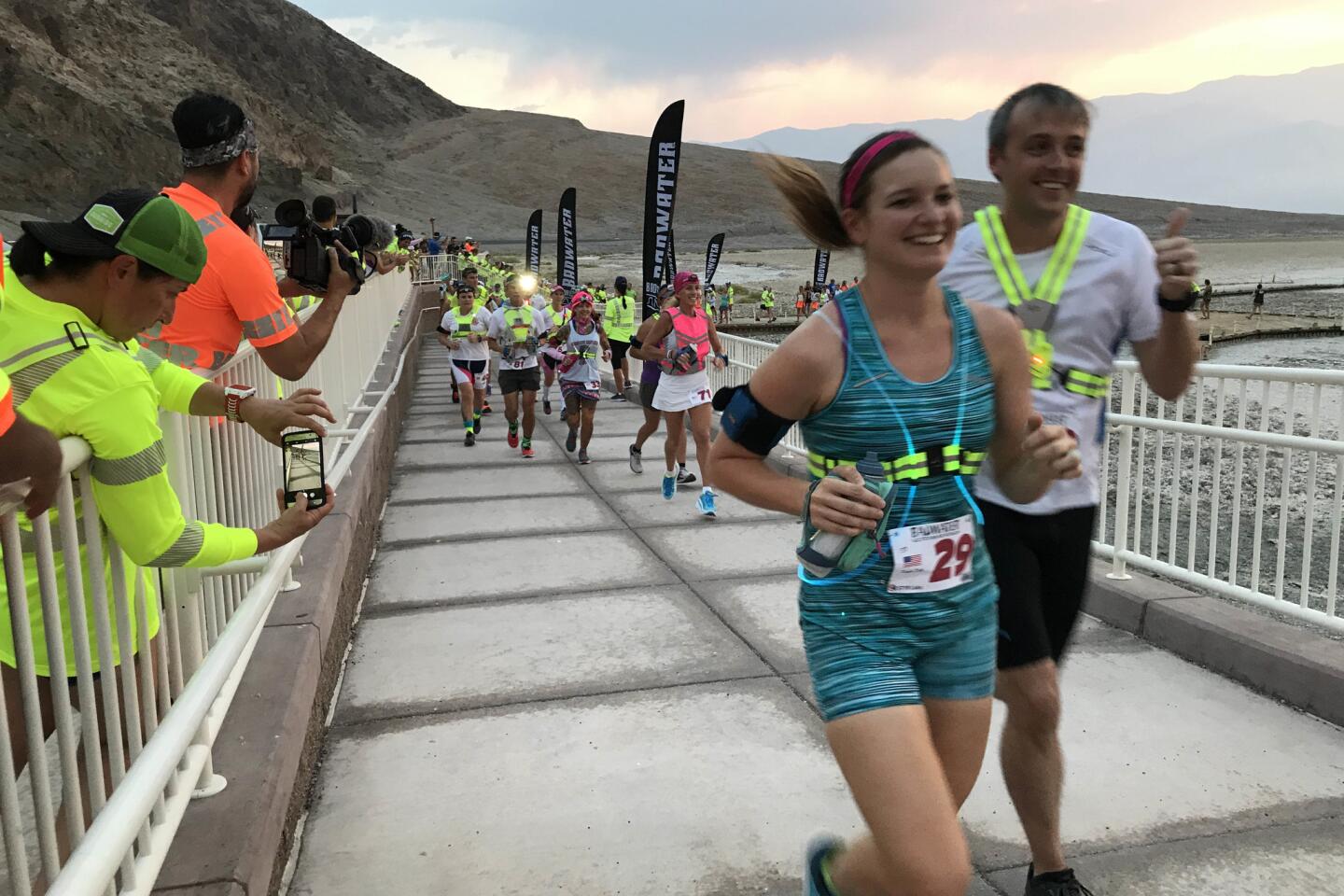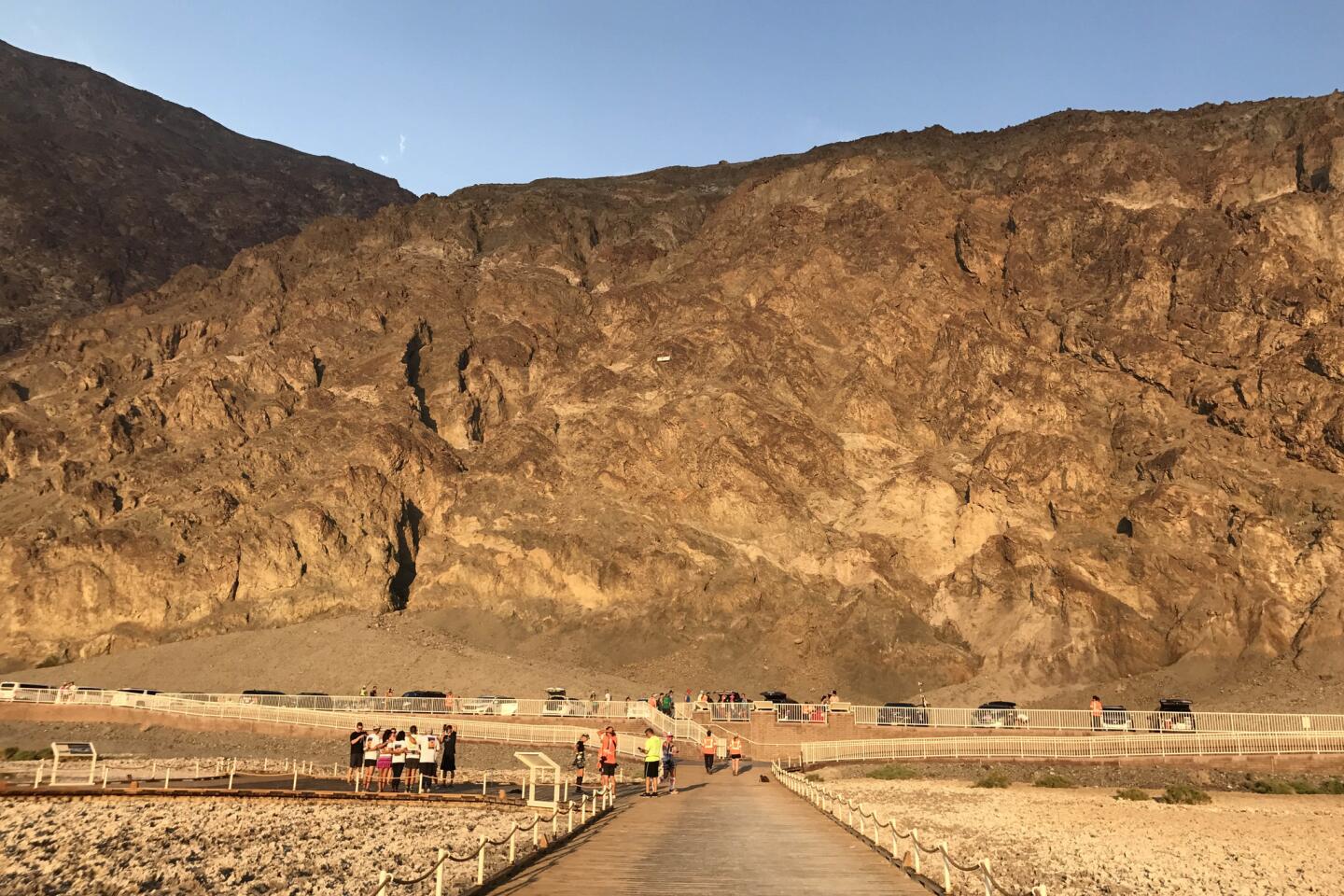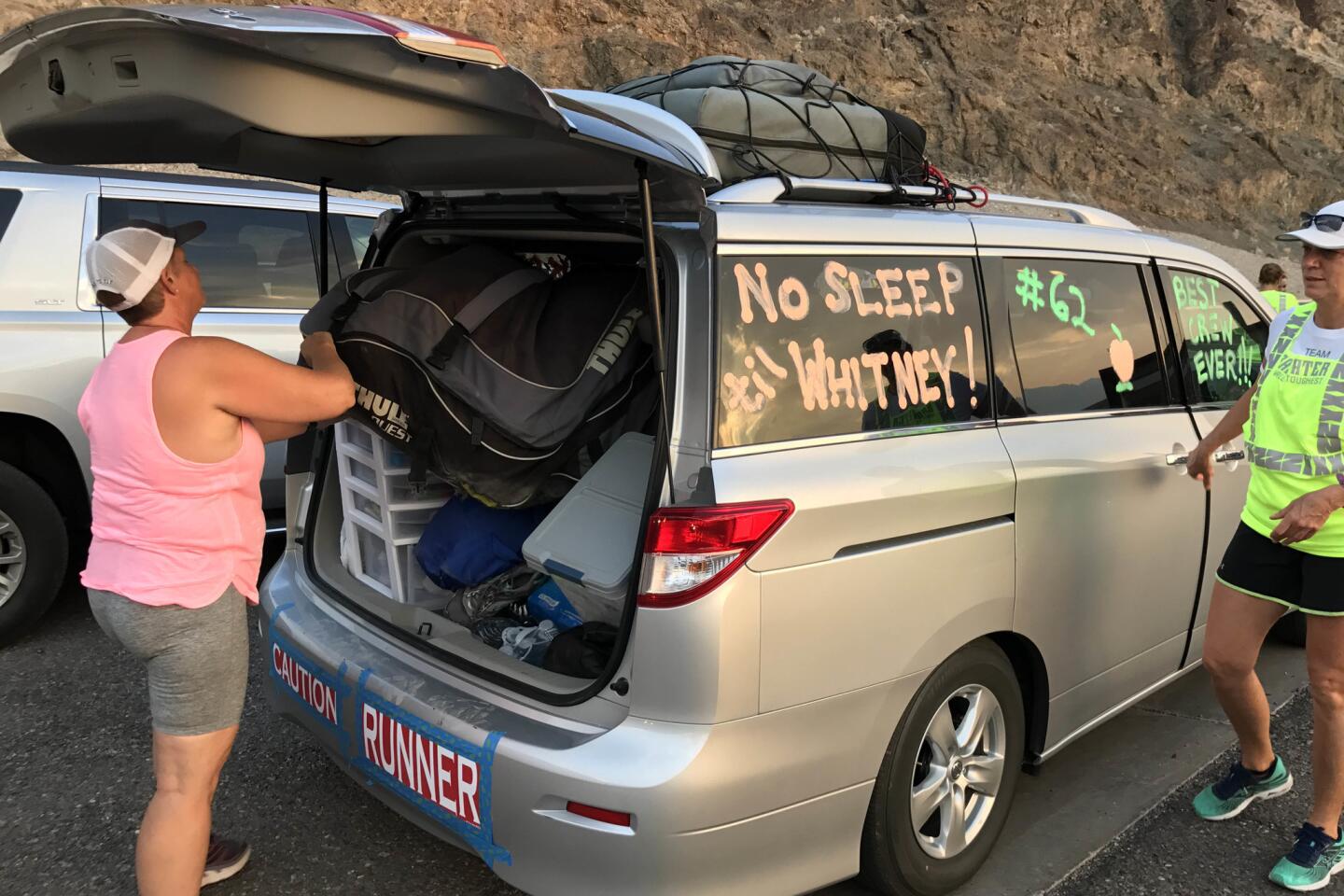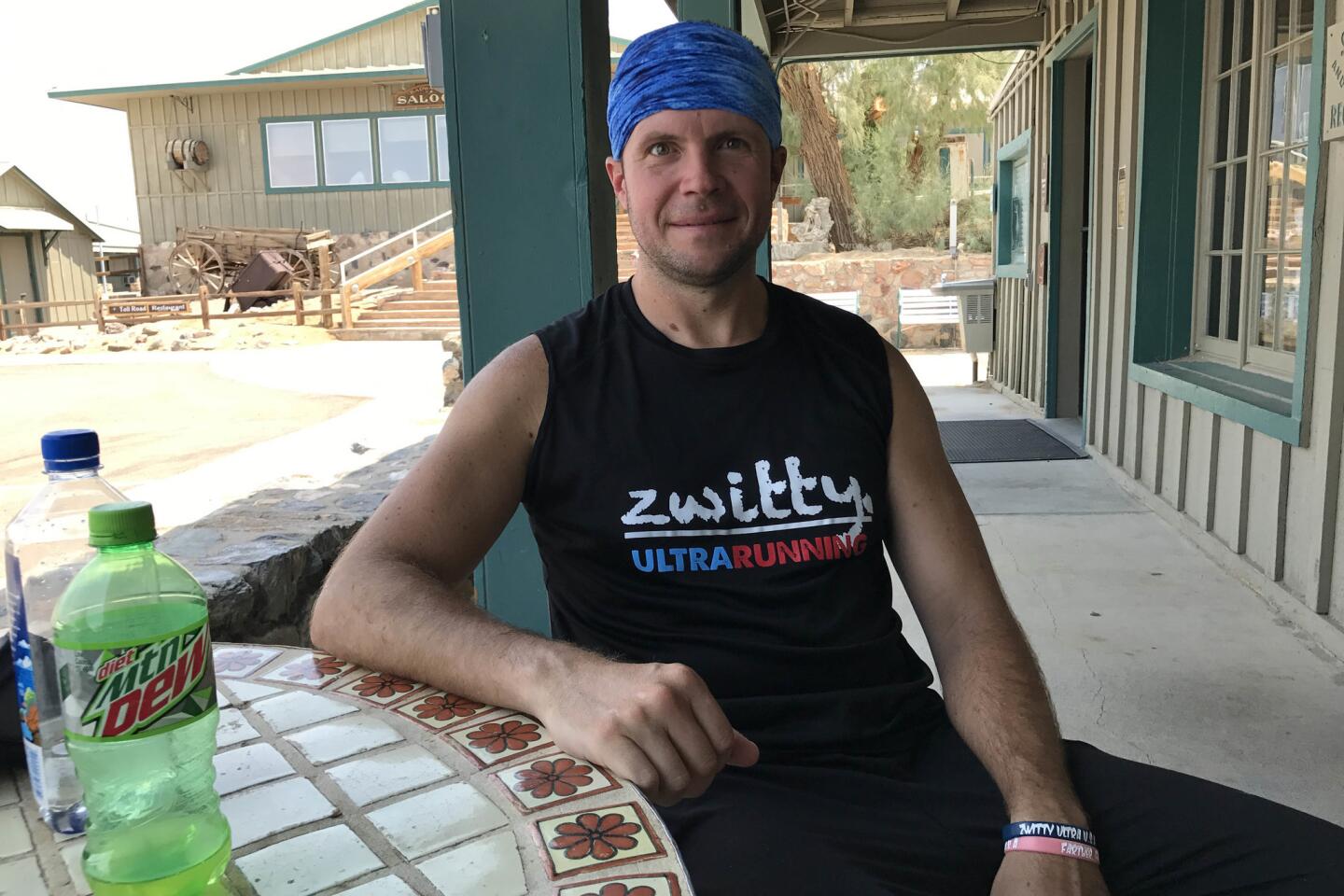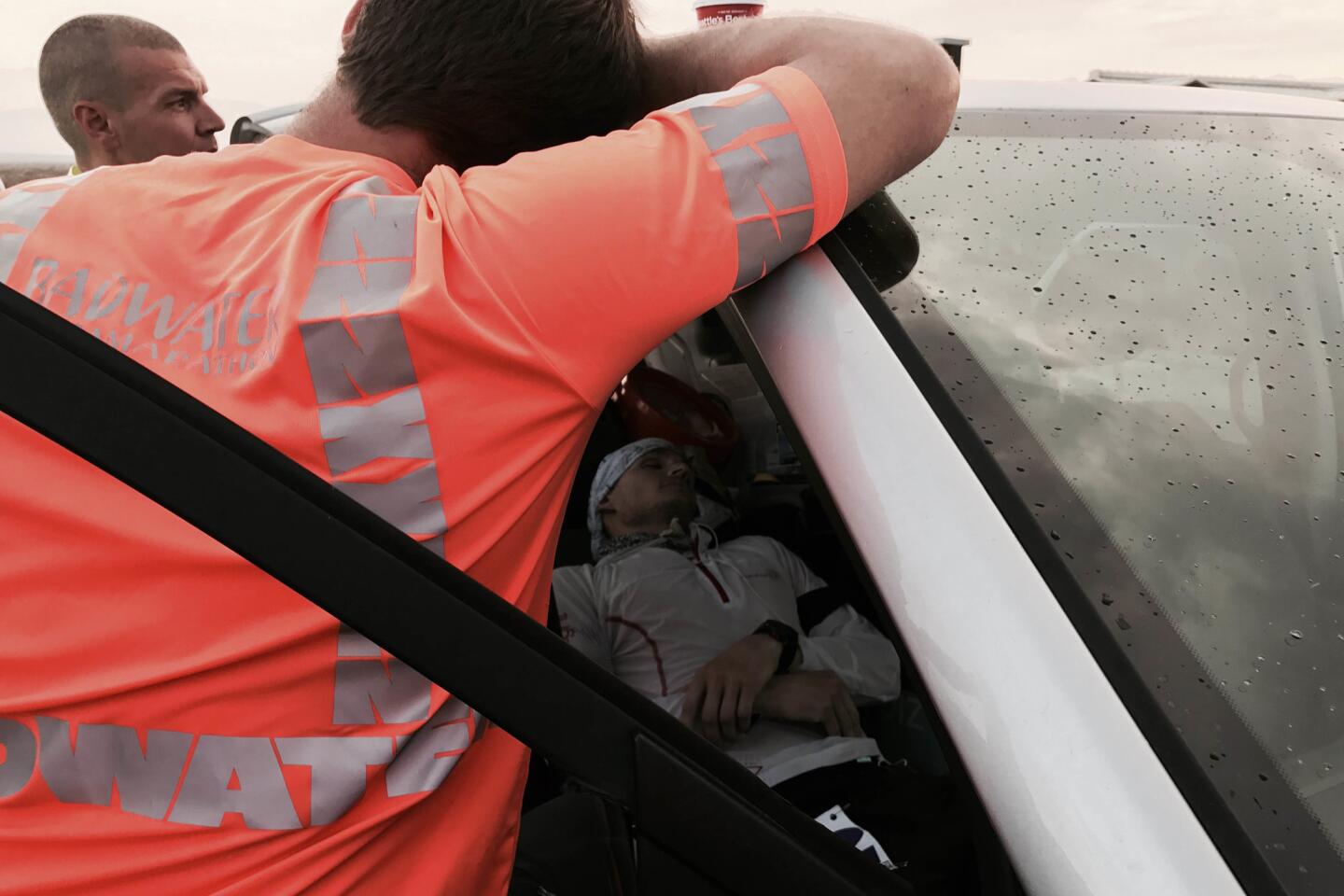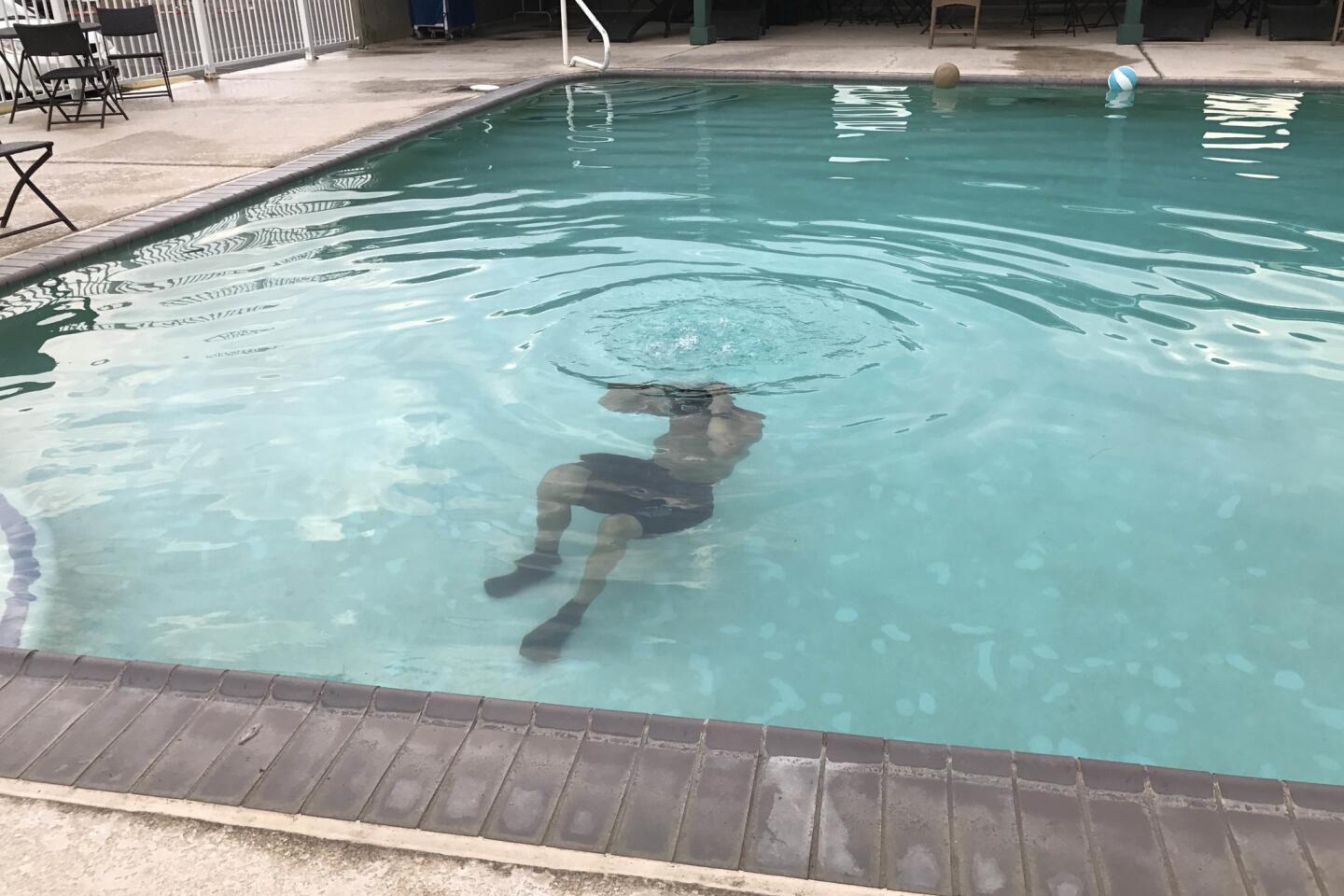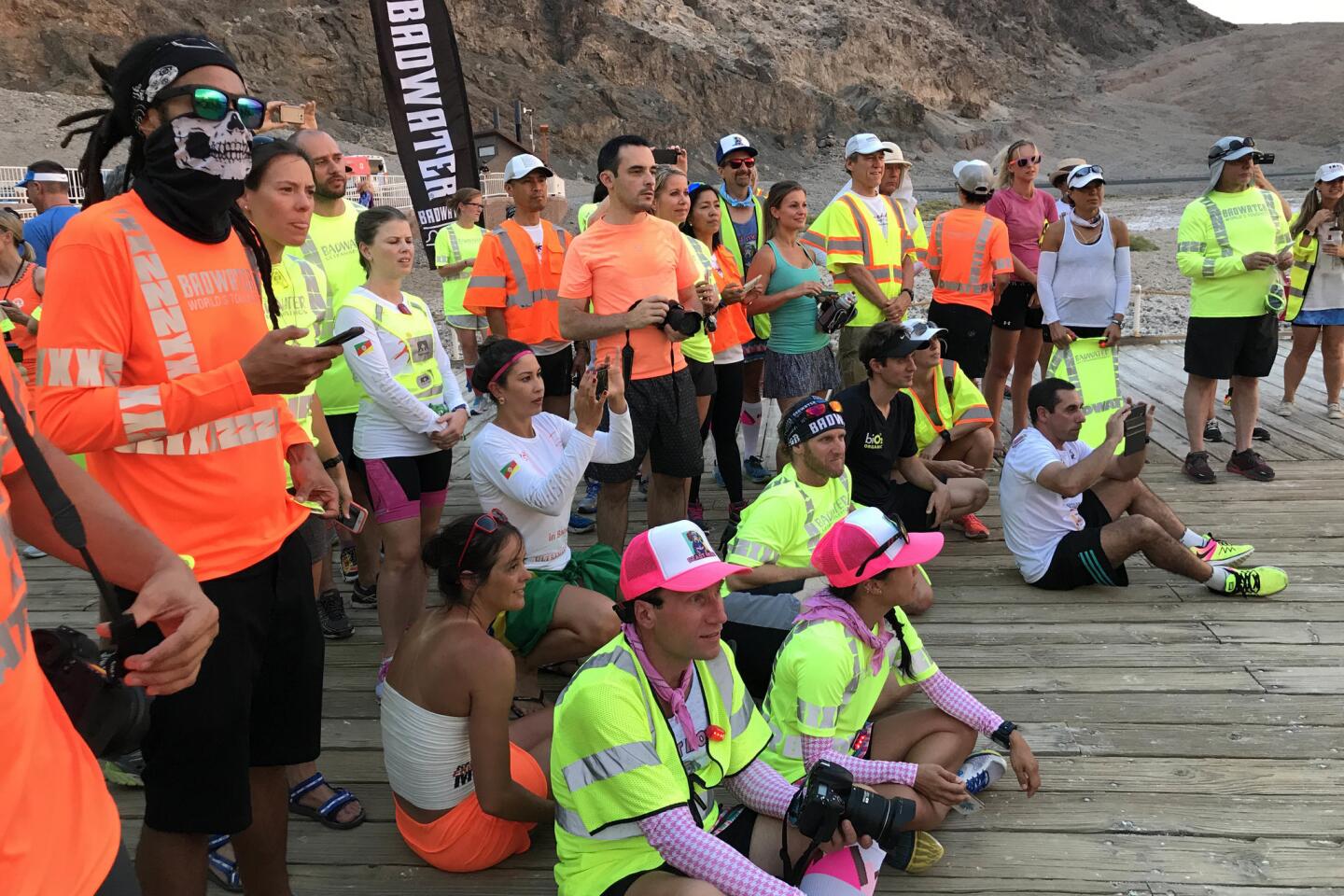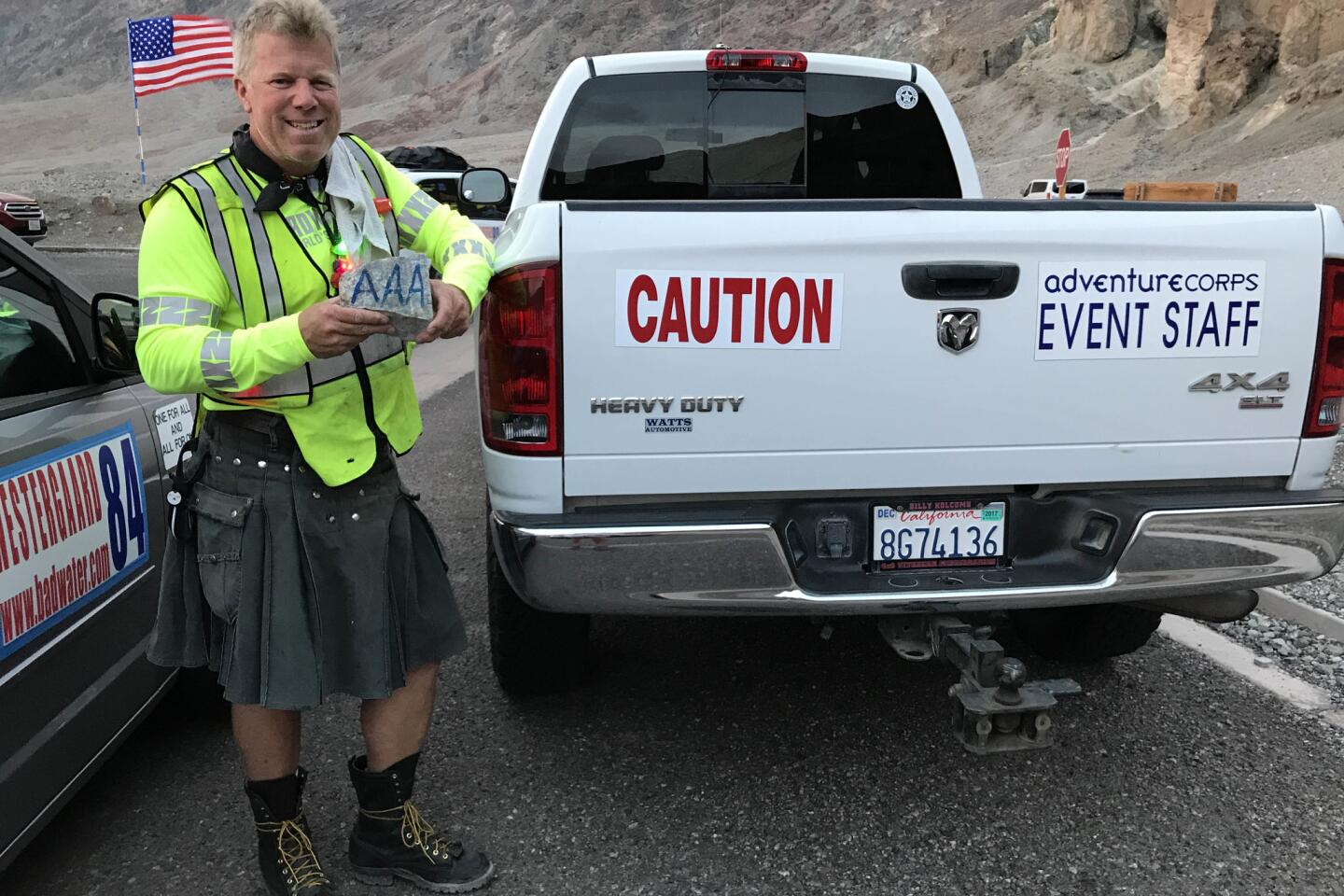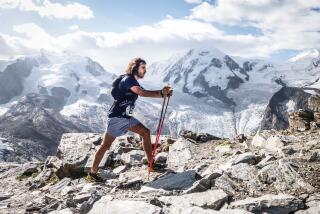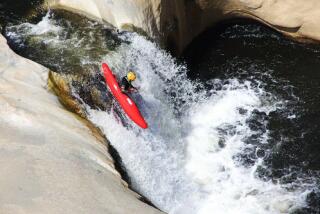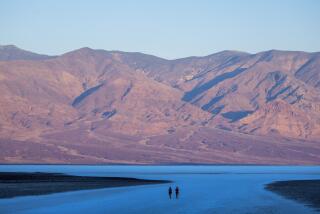California Journal: Not for wimps or toenails: Badwater runners take on 135 miles of hellish Death Valley terrain
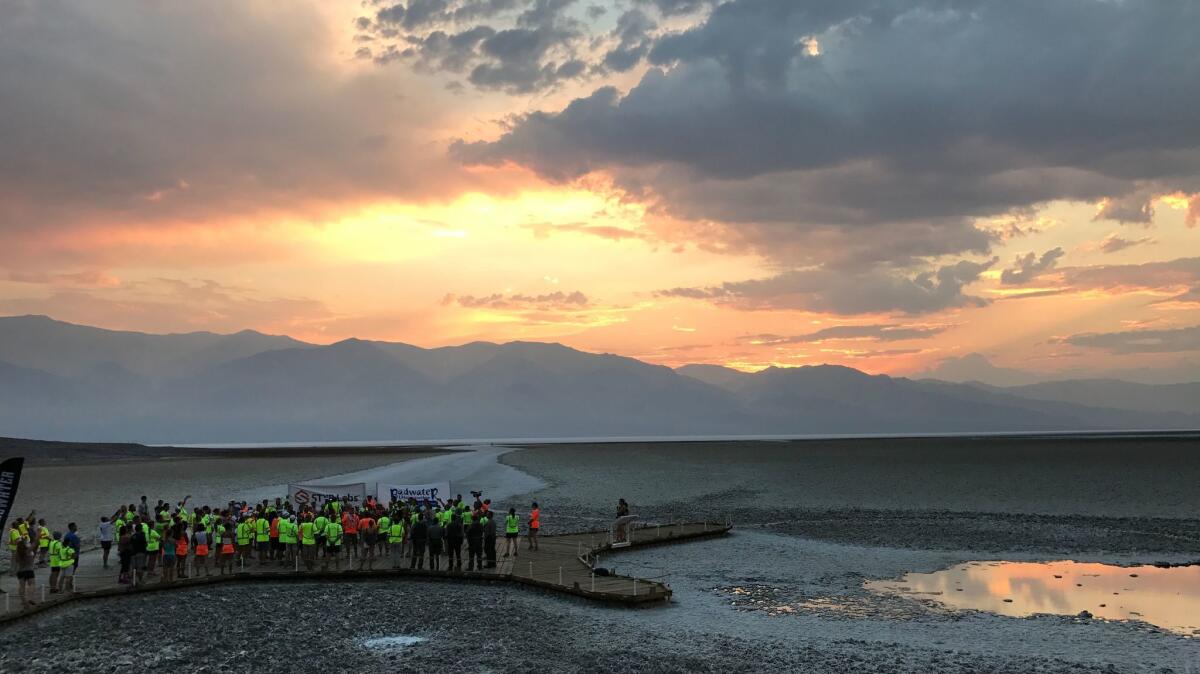
The night the race started, a vicious wind kicked up across the Badwater Basin. It felt less like a summer evening, and more like standing in front of a blast furnace in hell’s basement. This was late Monday and the temperature was about 115 degrees.
Not the ideal running weather, but that’s the whole point of the 135-mile Badwater Ultramarathon.
“It’s obscenely tough,” said Dave Krupski, 40, a Florida attorney and running coach who finished fifth two years ago. “This appeals to people who like to see what they are made of.”
On the edge of the immense saltwater flat, 10-time Badwater veteran Lisa Smith-Batchen, 56, stood in a tight circle with her crew, four people who will stop every couple of miles to provide water, food, blister care, massages, Advil — anything that’s needed — as she runs. Sometimes, one of them will run alongside her as a pacer, helping boost her when her spirits lag, she starts to fall asleep, or maybe hallucinates.
Smith-Batchen’s sometime pacer, 68-year-old Sister Mary Beth Lloyd, in nun’s habit and running shoes, led a brief prayer: “Thank you for bringing us here and blessing Lisa....Lord, keep us all safe, keep all the runners and those in need safe. Amen.”
Nearby, Jodi Weiss, 47, was shaking out her nerves. “By Mile 110, everything becomes something else,” said Weiss, who runs with her late mother’s ponytail elastic and a dollar bill with her father’s phone number on it. “This is the only race I ever have hallucinations.”
::
It is hard to describe the punishing nature of the STYR Labs Badwater Ultramarathon.
The race begins 280 feet below sea level, the lowest elevation in North America. Overnight, the field of 95 runners will pass through Furnace Creek, 17 miles away, and arrive at Mile 42, Stovepipe Wells, around sunrise.
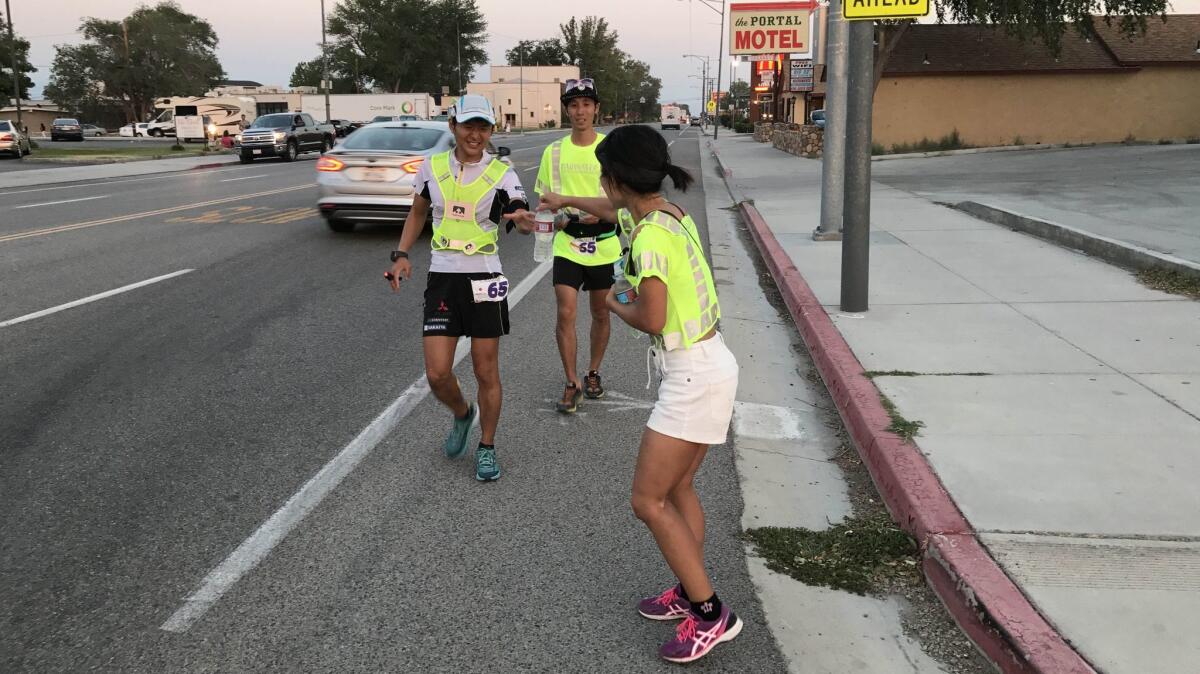
On the unforgiving valley floor, the air temperatures may rise to 120 degrees, but it is much hotter on the asphalt where the runners pound along. They will cross three mountain ranges, climbing a cumulative 14,600 feet (and descending 6,100) before hitting the Eastern Sierra town of Lone Pine, at Mile 122.
Thirteen miles later, they cross the finish line in Whitney Portal, elevation 8,374, the gateway to the highest summit in the contiguous U.S. The winner may finish before 24 hours have passed. Stragglers may take a little less than twice as long. For most, just finishing is the prize. Well, that and a coveted belt buckle.
While the distance may seem unfathomable, many have competed in even longer races. Some have run across the U.S., or participated in Greece’s 153-mile Spartathlon.
Eight days before Badwater, Harvey Lewis had competed in a 144-mile race in Belfast, Northern Ireland. “I’m definitely not 100%,” said Lewis, 41.
Maybe not, but 20 hours after his start, I could see on the interactive race map there were only five runners ahead of him. Two years ago, after sleeping for eight hours during the race due to a stomach bug, Lewis finished, then dropped to his knee to propose to his crew chief, who happened to be his girlfriend.
At 66, Marshall Ulrich is a hero to his fellow runners. A low-key Colorado farmer and businessman, he has run 124 ultramarathons, circumnavigated Death Valley’s perimeter and run 3,000 miles from San Francisco to New York City. Oh, and he also conquered the world’s “Seven Summits” on the first try each time.
“I don’t know. It’s just something I enjoy,” he told me when I asked why.
Years ago, when he was having trouble with his feet, he asked a podiatrist to surgically remove his toenails. The podiatrist wanted $250 per toe. “I thought, ‘That’s outrageous,’” Ulrich said.
At a cocktail party, he bumped into a surgeon friend willing to do it under local anesthesia for $500. “I said, ‘You know what? I also need a vasectomy.’ So he threw it in for another hundred bucks.”
This is not an unusual story. One runner’s crew chief told me a doctor removed the first joint of both second toes because they interfered with his running. I looked at his sandals and winced.
::
Crew members, many of whom are accomplished athletes in their own right, must follow all sorts of rules about how they drive, how to stop, what they wear.
Race Director Chris Kostman, 50, a wry ultra-athlete, has developed the rule book with the National Park Service, which had threatened to revoke the race permit over safety issues, even though Badwater has a sterling safety record. He runs the race, he said, as a “benevolent dictator,” and reserves the right to make up new rules on the spot, if necessary.
Kostman has deputized Scott Wall, 54, a cheerfully profane, kilt-wearing Highway Patrol motorcycle officer, as his chief enforcer.
“We don’t want any emergencies, because we are in the middle of nowhere,” said Wall, who is infamous in Long Beach for the number of cellphone tickets he issues. He carries a fist-sized rock, with the letters “AAA” on it. “If you lock yourself out of your car,” he warned crews, “I will break your window. I am Triple A.”
::
On Day 2, around daybreak at Mile 42, crews were tending to runners who were battling their bodies.
Jared Fetterolf, 28, sat on a camp chair, in pain. His stomach was killing him. Probably too many sugary drinks, said paramedic Dave Heckman. The runner moved to the front passenger seat of his support van and reclined the seat just for a moment. Heckman recommended that he stay still for a few minutes.
“Nope,” said Fetterolf, who hopped out of the van and rejoined the race.
A few feet away, Shannon Farar-Griefer, 56, whose eyeliner was perfect, did not feel nearly as good as she looked.
“I threw up all night,” she said. She thinks it was the espresso drink she had before the race. “Everything hurts now. But I feel lucky just to be here.” This is her seventh Badwater; her fourth since she was diagnosed with multiple sclerosis in 2006.
Among her crew were Jenn Shelton, the record-setting 100-mile runner, and Deena Kastor, an Olympic marathoner from Mammoth Lakes who won the bronze medal in 2004 in Athens (2:27:20).
“I love the feeling of crewing,” said Kastor, whose running memoir is due at her publisher this week. “You walk away so inspired.”
“ Alright, girls,” said Farar-Griefer, standing up. “I’m gonna bust a move.”
She hugged her crew, trotted off, and soon disappeared into the shimmering heat.
Twitter: @AbcarianLAT
MORE FROM ROBIN ABCARIAN
When it comes to L.A. development projects, does anyone really care what the neighbors think?
A new twist on mental health: Running with the therapist while discussing life’s problems
In West Los Angeles, the American dream collides with the housing shortage
More to Read
Sign up for The Wild
We’ll help you find the best places to hike, bike and run, as well as the perfect silent spots for meditation and yoga.
You may occasionally receive promotional content from the Los Angeles Times.
